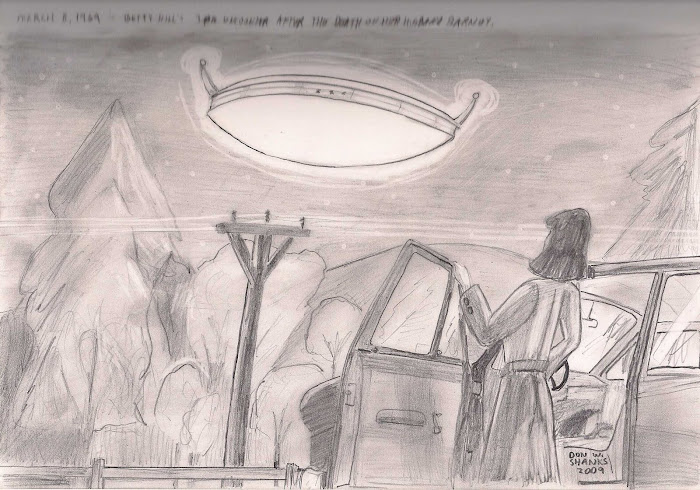Mistral Engines is a new Swiss start-up company created in 2001 by a group of pilots and aircraft owners who were convinced that there is a market for a new generation of general aviation engines that offer greater reliability in a compact size. Also providing a greater power-to-weight ratio and the ability to operate with a wide range of fuels than current generation aircraft engines.
They developed a liquid-cooled, electronically controlled Mistral engine that can run on unleaded 95-octane automotive gasolines rather than diesel type of fuels. Based on the Wankel rotary-piston design, it gives the Mistrals a huge maintenance cost advantage over standard piston engines since it has 95% fewer moving parts. The targeted time between overhauls is 3,000 hours.
Mistral's first engine, the G-300, is a three-rotor, 300 hp that is currently undergoing FAA certification at this time with an expected approval to be granted by the middle of 2009. A twin-rotor, 200 hp engine, has already been fully developed. The first models to go out of the factory will be normally aspirated. Future models will have the option of being turbocharged. All engines will be identical except for the number of rotors. The Mistral engines have a company patented dual injection, dual-channel digital electronic control system module.
Headquarters for Mistral are in Geneva and at a wholly owned subsidiary in DeLand, Flordia. They are planning on producing 200-300 units a year. And when FAA certification arrives, then jump up to 2000 units a year. Mistral is operating in parallel to find both retrofit and new aircraft applications for their G-300. The engine can power both aircraft and helicopters.
At AirVenture in Oshkosh, Wisconsin this past year, they grander high interest from attendees. Mistral Engines intends to take advantage of the boom going on in Russia and in Europe for small to medium-size business and general aviation aircraft. One of the first applications that they have contracted for is a four-seat trainer to be distributed by Russia's Aviama and a light helicopter being developed by Kazan (another Russian aircraft manufacturer).
Ref. Aviation Week & Space Technology, November 24, 2008 issue. “Swiss 'Mogas' Engine Readied for Market” by Michael A. Taverna, page 44.
Saturday, November 29, 2008
Sunday, November 23, 2008
UFO vs Police Helicopter on May 2, 2008
Latest UFO story from United Kingdom is that a Birmingham, England, Police helicopter narrowly avoid a mid-air collision with a unidentified flying object back on May 2, 2008, around 10pm. The helicopter was engaging in routine surveillance work over the city when the two observers spotted the unknown lights and told the pilot about them. A report was filed with the Airprox Board, which records detail near misses and reports them to the military and the air traffic control units in the British nation.
The object came to within 100 meters of the helicopter. At first, the pilot thought that it might have been a radio control helicopter, but dismissed that idea quietly enough after they used their onboard thermal camera to try and spot any signs of people on the ground with such equipment. The British Model Flying Association (similar to the American Academy of Model Aeronautics) ruled that possibility out due to the high altitude that the helicopter was at to begin with.
Ref. : “UFO involved in a dramatic incident” Birmingham Mail, by Anuji Varma, November 21, 2008. ( http://www.birminghammail.net/news/birmingham-news/2008/11/21/ufo-involved-in-a-dramatic-incident-97319-22310179/ )
The object came to within 100 meters of the helicopter. At first, the pilot thought that it might have been a radio control helicopter, but dismissed that idea quietly enough after they used their onboard thermal camera to try and spot any signs of people on the ground with such equipment. The British Model Flying Association (similar to the American Academy of Model Aeronautics) ruled that possibility out due to the high altitude that the helicopter was at to begin with.
Ref. : “UFO involved in a dramatic incident” Birmingham Mail, by Anuji Varma, November 21, 2008. ( http://www.birminghammail.net/news/birmingham-news/2008/11/21/ufo-involved-in-a-dramatic-incident-97319-22310179/ )
Saturday, November 22, 2008
Fomalhaut B Discovered
Fomalhaut is a star 27 light-years away from earth and is one of the brightest in the nighttime southern hemisphere sky in the constellation of Piscis Australis. And now scientists have photographic proof of extrasolar planets now that orbit that star.
Astronomers, using the corongraph on the Hubble Advanced Camera for Survey in 2004 created a false exclipse blocking the star itself – which basically allowed the astronomers to view the dust cloud circling that star. A second image was collected in 2006 which showed how far the planet had moved along in its orbit. That orbit is now determined to be about a 872-Earth-year orbit around Fomalhaut. That places this new extrasolar planet just within that star's comparable Kuiper Belt. Basically – its about the same distance from Fomalhaut as Neptune is from our own sun (10.7 billion miles from Fomalhaut is what the astronomers announched).
To date, more than 300 extrasolar planets have been detected, but only with indirect methods.
Ref. AW&ST Nov. 17, 2008. page 35. “Extrasolar Planets”
Astronomers, using the corongraph on the Hubble Advanced Camera for Survey in 2004 created a false exclipse blocking the star itself – which basically allowed the astronomers to view the dust cloud circling that star. A second image was collected in 2006 which showed how far the planet had moved along in its orbit. That orbit is now determined to be about a 872-Earth-year orbit around Fomalhaut. That places this new extrasolar planet just within that star's comparable Kuiper Belt. Basically – its about the same distance from Fomalhaut as Neptune is from our own sun (10.7 billion miles from Fomalhaut is what the astronomers announched).
To date, more than 300 extrasolar planets have been detected, but only with indirect methods.
Ref. AW&ST Nov. 17, 2008. page 35. “Extrasolar Planets”
Labels:
extrasolar planets,
Fomalhaut,
Hubble,
Kuiper Belt,
Neptune,
Piscis Australis
Friday, November 21, 2008
Star Trek Deflector Shields – A reality?
In a new article post on Space.com by Clara Moskowitz, she writes about a old/new idea that might actually be close to reality now with some recent tests done. In Star Trek, the starship is protected by its deflector shields. Radiation and small space debris are deflected from the ships path through outer space.
Now a new study by Ruth Bamford of the Science and Technology Facilities, Rutherford Appleton Laboratory in Great Britain; has found that it is possible to create a portable magnetic shield to protect astronauts on long-duration space missions. A future space ship could be fitted out with a tiny magnetosphere that would re-direct the harmful charged particles in the solar wind around the ship and thus, protecting the crew inside. Bamford and her colleagues tested their theories with miniature plasma fields in the laboratory that mimic the charged particles that the sun generates. The nuts and bolt engineering for the deflector still need to be work out, but the technique shows promise.
Ruth Bamford published her findings in the November 4th issue of the journal Plasma Physics and Controlled Fusion. The protons coming off of the solar wind are the greatest concern for the long term health of the astronauts because the particles are large enough to break down their DNA. Bamford reported that if there was a Apollo mission between Apollo 16 and 17, that flight would have been a fatal one for the crew.
Ref. November 19, 2008 Space.com ( http://www.space.com/businesstechnology/081119-tw-magnetic-shield.html ). Article written by Clara Moskowitz. Entitled “Star Trek Deflector Shield Envisioned for Mars Mission.”
Now a new study by Ruth Bamford of the Science and Technology Facilities, Rutherford Appleton Laboratory in Great Britain; has found that it is possible to create a portable magnetic shield to protect astronauts on long-duration space missions. A future space ship could be fitted out with a tiny magnetosphere that would re-direct the harmful charged particles in the solar wind around the ship and thus, protecting the crew inside. Bamford and her colleagues tested their theories with miniature plasma fields in the laboratory that mimic the charged particles that the sun generates. The nuts and bolt engineering for the deflector still need to be work out, but the technique shows promise.
Ruth Bamford published her findings in the November 4th issue of the journal Plasma Physics and Controlled Fusion. The protons coming off of the solar wind are the greatest concern for the long term health of the astronauts because the particles are large enough to break down their DNA. Bamford reported that if there was a Apollo mission between Apollo 16 and 17, that flight would have been a fatal one for the crew.
Ref. November 19, 2008 Space.com ( http://www.space.com/businesstechnology/081119-tw-magnetic-shield.html ). Article written by Clara Moskowitz. Entitled “Star Trek Deflector Shield Envisioned for Mars Mission.”
Labels:
Clara Moskowitz,
deflector shields,
DNA,
Ruth Bamford,
Star Trek
Wednesday, November 12, 2008
Here is the NEW starship USS Enterprise

First image of the new starship USS Enterprise was released recently to Entertainment Weekly in November by J.J. Abrams. This new design is kinda ungainly looking.
It looks like a cross between the Enterprise from the first movie and a ship from Star Trek – The Next Generation. And for the life of me, those warp nacelles remind me of the headlight clusters from some 1950s Ford or Chevy automobile! And the engineering hull, while beefier than the original, it just doesn't quite look right. The shuttlecraft bay is still inbetween the two warp nacelle/pylons, but from the angle shown, the rear half of the ship appears to be cut “short” from the original TOS Enterprise. The deflector dish is too far forward, while the main hull pylon (between the saucer hull and the engineering hull) is thicker. Lots of improvements there that were taken from the first movie as well such as the proton torpedo launchers and the side airlocks.
Now all that might appear as criticisms. But to look at it from a modern day engineering angle – this does appear to be a better design than the original. The main problem was weight distribution in the original design. This one seems to have taken care of that by moving the saucer backwards a bit and moving the bulkiest part of the warp nacelles forward in order to have a better stabilized center of gravity.
Ref. ( http://trekmovie.com/2008/11/11/first-full-image-of-new-star-trek-enterprise/ ) and ( http://popwatch.ew.com/popwatch/2008/11/star-trek-first.html )
It looks like a cross between the Enterprise from the first movie and a ship from Star Trek – The Next Generation. And for the life of me, those warp nacelles remind me of the headlight clusters from some 1950s Ford or Chevy automobile! And the engineering hull, while beefier than the original, it just doesn't quite look right. The shuttlecraft bay is still inbetween the two warp nacelle/pylons, but from the angle shown, the rear half of the ship appears to be cut “short” from the original TOS Enterprise. The deflector dish is too far forward, while the main hull pylon (between the saucer hull and the engineering hull) is thicker. Lots of improvements there that were taken from the first movie as well such as the proton torpedo launchers and the side airlocks.
Now all that might appear as criticisms. But to look at it from a modern day engineering angle – this does appear to be a better design than the original. The main problem was weight distribution in the original design. This one seems to have taken care of that by moving the saucer backwards a bit and moving the bulkiest part of the warp nacelles forward in order to have a better stabilized center of gravity.
Ref. ( http://trekmovie.com/2008/11/11/first-full-image-of-new-star-trek-enterprise/ ) and ( http://popwatch.ew.com/popwatch/2008/11/star-trek-first.html )
Armadillo Aerospace Wins Lunar Lander Challenge
Armadillo Aerospace has recently won the Northrop Grumman Lunar Lander Challenge (Level One) worth $350,000; with its vertical take-off/landing test vehicle. Armadillo Aerospace is planning on developing a suborbital space-tourism spacecraft that would operate out of the planned Spaceport America in Las Cruces, New Mexico along with Virgin Galactic and its SpaceShipTwo. Their prototype vehicle ascended to an altitude of 50 meters, then translation over to another landing pad 100 meters away and landed after a 90 second flight. This is to simulate a lander shuttling cargo across the lunar surface. The Armadillo Aerospace team then made a second flight to return to the original pad 2.5 hours later.
Still waiting to be handed out is the Level Two prize of 1.65 million which requires the hover time to be doubled and landing on a simulated lunar terrain that is filled with obstacles.
The company is proposing that their tickets to ride will cost $100,000 instead of the $200,000 planned by Virgin Galactic. The VT/VL(Vertical Take-off/Vertical Landing) spacecraft will have “fishbowl” cabins to provide the travelers with unobstructed views of the planet while experiencing micro-gravity.
Ref. Aviation Week & Space Technology, November 3, 2008. Page 20.
Still waiting to be handed out is the Level Two prize of 1.65 million which requires the hover time to be doubled and landing on a simulated lunar terrain that is filled with obstacles.
The company is proposing that their tickets to ride will cost $100,000 instead of the $200,000 planned by Virgin Galactic. The VT/VL(Vertical Take-off/Vertical Landing) spacecraft will have “fishbowl” cabins to provide the travelers with unobstructed views of the planet while experiencing micro-gravity.
Ref. Aviation Week & Space Technology, November 3, 2008. Page 20.
Sunday, November 2, 2008
US Navy intercepts another test missile

U.S. Navy officials say that two short-range ballistic missiles that were launched from Hawaii in a defense system test program in a story released November 2, 2008. One of the missiles was hit by a interceptor missile fired from the USS Paul Hamilton. Another interceptor missile from the USS Hopper, failed to hit its target. The SM-3 (Standard Missile-3) is what the interceptor missile is known as.
Vice Admiral Samuel J. Locklear said that Saturday's trail marked the first time that the Navy – rather than the Pentagon's Missile Defense Agency – oversaw the firing of a SM-3 against a ballistic missile target. The target missiles were launched from the Pacific Missile Range Facility on Kauai island. The mission was controlled from the San Diego-based US Third Fleet facilities.
HONOLULU AP/Yahoo (http://news.yahoo.com/s/ap/20081102/ap_on_go_ca_st_pe/missile_defense_test_2 )
Vice Admiral Samuel J. Locklear said that Saturday's trail marked the first time that the Navy – rather than the Pentagon's Missile Defense Agency – oversaw the firing of a SM-3 against a ballistic missile target. The target missiles were launched from the Pacific Missile Range Facility on Kauai island. The mission was controlled from the San Diego-based US Third Fleet facilities.
HONOLULU AP/Yahoo (http://news.yahoo.com/s/ap/20081102/ap_on_go_ca_st_pe/missile_defense_test_2 )
Subscribe to:
Comments (Atom)








+033.jpg)